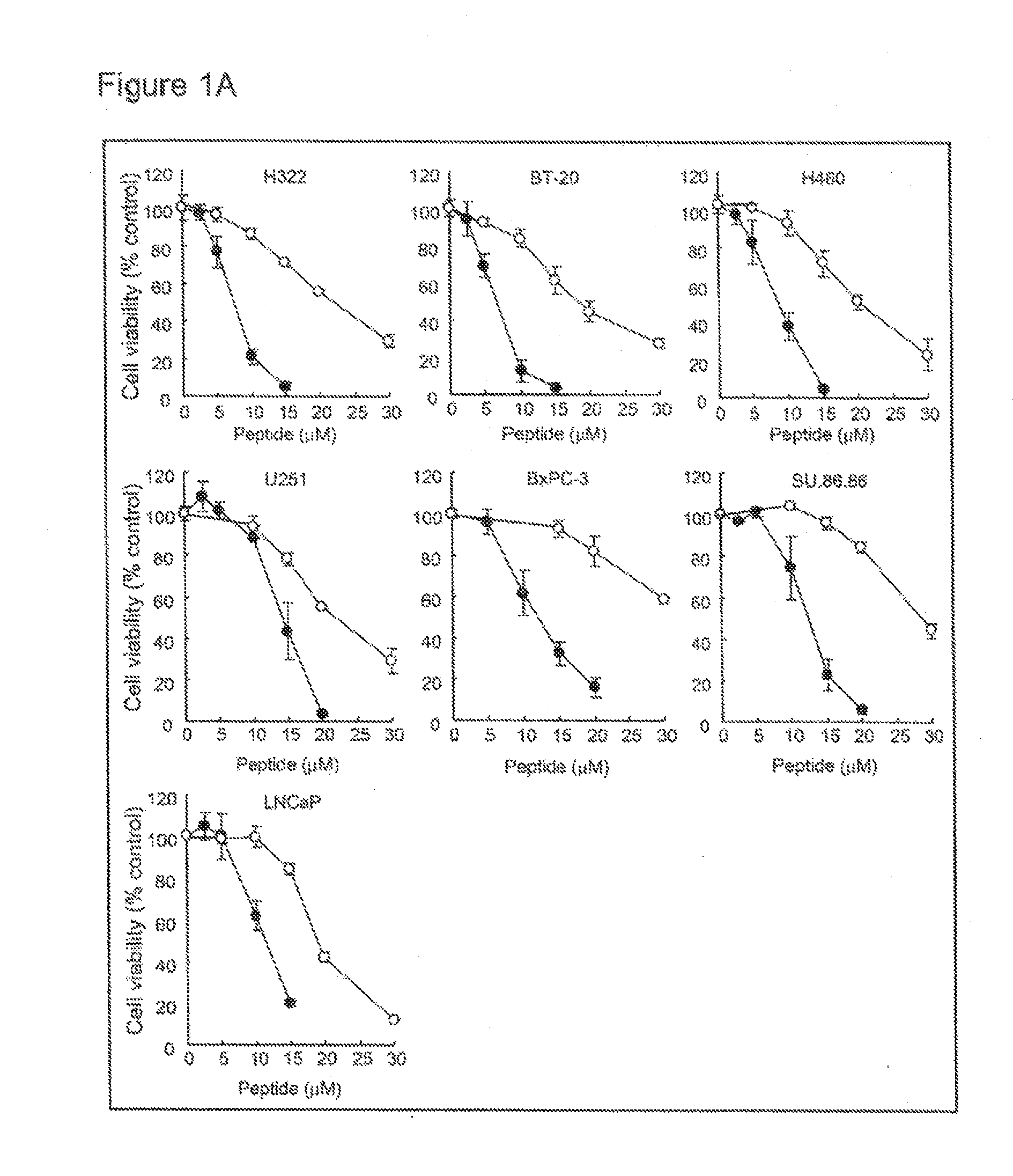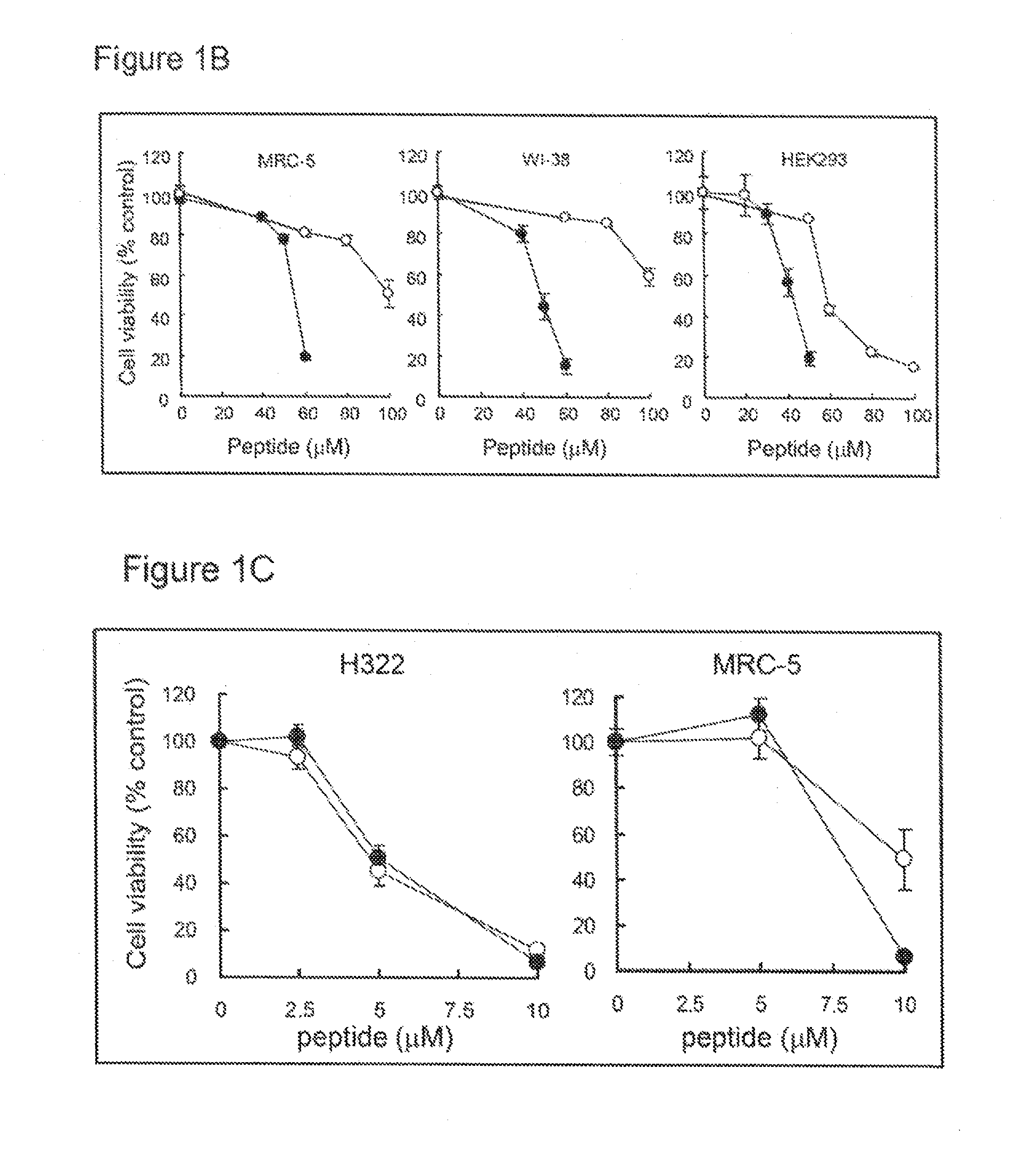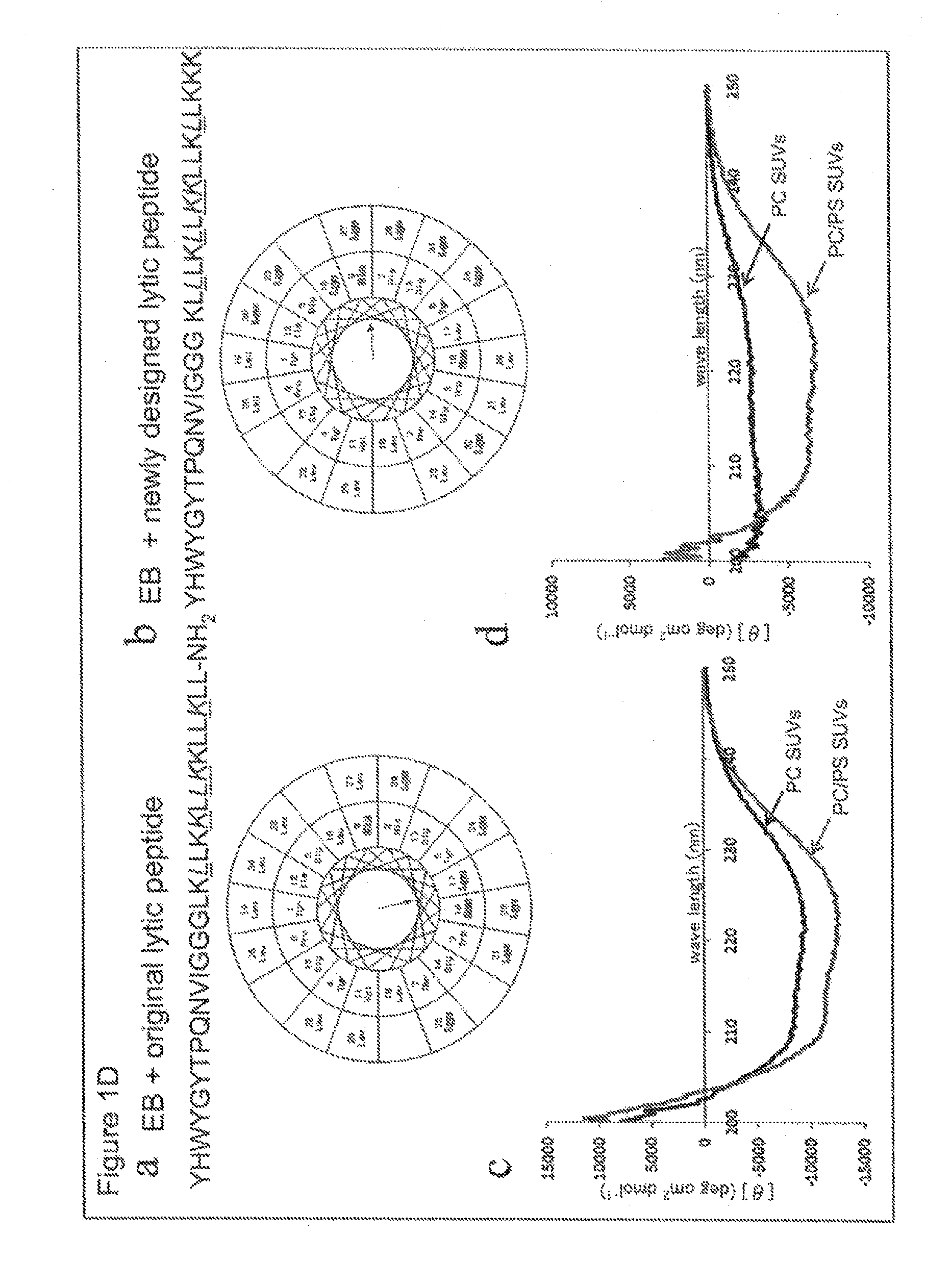Selective anticancer chimeric peptide
a chimeric peptide, selective technology, applied in the field of peptidetoxin, can solve the problems of limited use, unsuitable combination, unsuitable molecular targeting, etc., and achieve the effect of avoiding side effects
- Summary
- Abstract
- Description
- Claims
- Application Information
AI Technical Summary
Benefits of technology
Problems solved by technology
Method used
Image
Examples
example 1
EGFR-Targeted Chimeric Peptide
[Materials and Methods]
(Cell Lines)
[0356]Human breast cancer (BT-20 and T47D), lung cancer (H322 and H460), pancreatic cancer (SU.86.86), prostate cancer (LNCaP), brain tumor (U251), and lung fibroblast (MRC-5 and WI-38) cell lines were purchased from the American Type Culture Collection (Manassas, Va.). Human pancreatic cancer cell line (BxPC-3) and colon cancer cell line (HCT116 and DLD-1) were purchased from the European Collection of Cell Cultures (ECACC; Salisbury, Wiltshire, UK). Human embryonic kidney cell line (HEK293) was purchased from RIKEN Cell Bank (Tsukuba, Japan). Cells were cultured in RPMI1640 (BT-20, T47D, H322, H460, SU.86.86, LNCaP, U251, BxPC-3, DLD-1 and SW837), MEM (MRC-5 and WI-38), McCoy's 5a (HCT116) or D-MEM (HEK293) containing 10 μl % FBS (BioWest, Miami, Fla.), 100 μg / ml penicillin and 100 g / ml streptomycin (Nakalai Tesque, Kyoto, Japan).
(Peptides)
[0357]The following peptides were purchased from Invitrogen, Carlsbad, Calif.:...
example 2
Exhaustive Analysis of EGF-Receptor Binding Peptides
[0393]In the present Example, experiments for determining whether or not it is possible to use EGF receptor-binding peptide analogs (having the amino acid sequence X1X2X3X4X5X6X7X8X9X10X11X12 (SEQ ID NO: 8), wherein:
[0394]X1 is Y, or an amino acid similar thereto which is S, H or F;
[0395]X2 is H, or an amino acid similar thereto which is R or K;
[0396]X3 is W, or an amino acid similar thereto which is Y, F or H;
[0397]X4 is Y, or an amino acid similar thereto which is S, H or F;
[0398]X5 is G, or an amino acid similar thereto which is A, V, I or L;
[0399]X6 is Y, or an amino acid similar thereto which is S, H or F;
[0400]X7 is T, or an amino acid similar thereto which is S, H or F;
[0401]X8 is P, or an amino acid similar thereto which is hydroxyl proline;
[0402]X9 is Q, or an amino acid similar thereto which is N;
[0403]X10 is N, or an amino acid similar thereto which is S, H or F;
[0404]X11 is V, or an amino acid similar thereto which is G...
example 3
Combination of Cancer Cell Membrane-Lytic Sequence (Only L-Amino Acid) and IL-4 Receptor (IL4R)-Targeted Sequence as a Cancer Cell-Targeted Sequence
[0408]In the present Example, it was investigated whether or not the same effect as in Example 1, such as enhancement of cell-killing effect, was observed using a chimeric peptide formed by combining the cancer cell membrane-lytic sequence of KLLLKLLKKLLKLLKKK (all amino acids are L-amino acids; LyticL; SEQ ID NO: 27) and IL4R-targeted sequence. The chimeric peptide sequence is as follows:
(SEQ ID NO: 18)IL4-LyticL:KQLIRFLKRLDRNGGGKLLLKLLKKLLKLLKKK.
(Protocol)
[0409]Based on the results of binding three-dimensional structure analysis of IL4R and IL-4, partial peptide sequence which is important for binding (KQLIRFLKRLDRN (SEQ ID NO: 26)) was designed and chemically synthesized. By BIACORE analysis, binding affinity with human recombinant IL4R protein was assessed. The aforementioned chimeric peptide was synthesized, and in vitro cell-killin...
PUM
 Login to View More
Login to View More Abstract
Description
Claims
Application Information
 Login to View More
Login to View More - R&D
- Intellectual Property
- Life Sciences
- Materials
- Tech Scout
- Unparalleled Data Quality
- Higher Quality Content
- 60% Fewer Hallucinations
Browse by: Latest US Patents, China's latest patents, Technical Efficacy Thesaurus, Application Domain, Technology Topic, Popular Technical Reports.
© 2025 PatSnap. All rights reserved.Legal|Privacy policy|Modern Slavery Act Transparency Statement|Sitemap|About US| Contact US: help@patsnap.com



